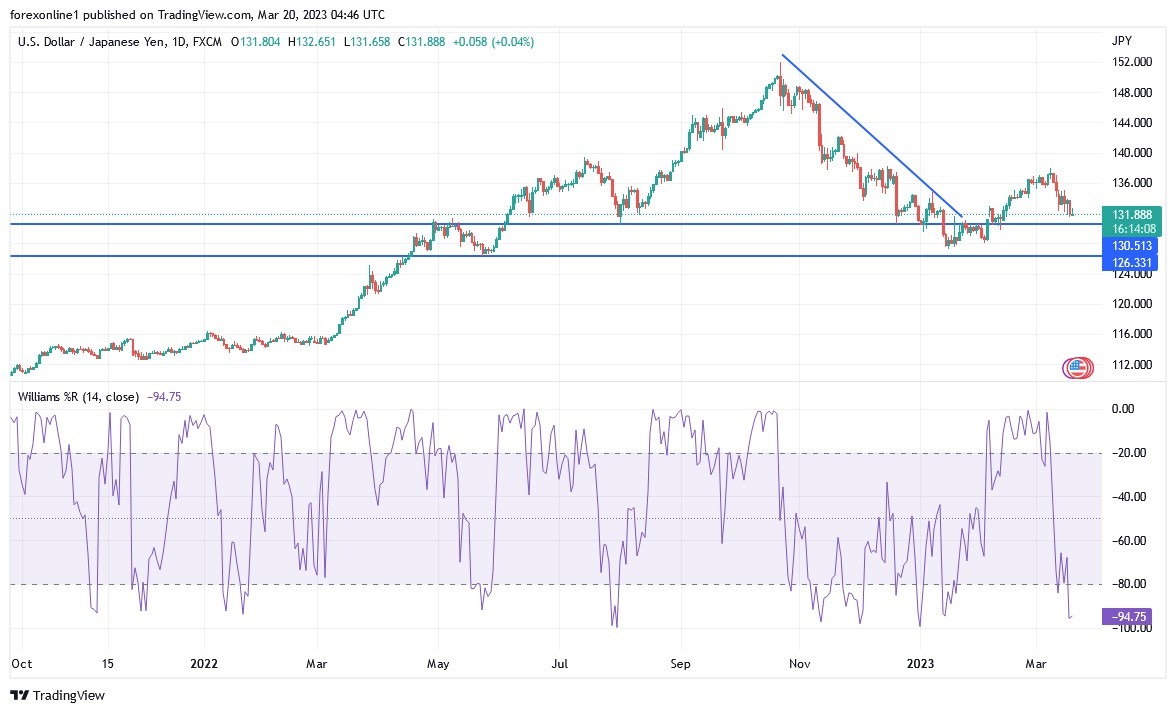Most of last week’s trading was generally bearish for the USD/JPY currency pair, with losses that reached the support level of 131.55, before closing around the support level of 131.82. The performance was a natural reaction to the impact of strong pressures on the US dollar amid the collapse of a number of US banks. This is because of the sharp pace of US interest rate hike. In the middle of last week's trading, the currency pair tried to stop the decline, settling around the 135.11 level, but investors' aversion to risk favored the Japanese yen in the end.
According to the economic analysis, the USD/JPY currency pair is trading affected by the results of the latest economic data, as the Japanese Tertiary Industry Index for January outperformed the expected performance (MoM) by 0.3% with a change of 0.9%. Earlier in the week, Japanese Industrial Production for January missed both forecasts (MoM) and (YoY) of -4.6% and -2.3% respectively with a change of -5.3% and -3.1%. Elsewhere, Japanese imports and exports for February came in below expectations (y-o-y) at 12.2% and 7.1% respectively with a change of 8.3% and 6.5%.
In the United States, the preliminary Michigan index of US consumer confidence for March missed the expected reading of 67 with a reading of 63.4. On the other hand, the preliminary forecast for 5-year consumer inflation for March posted a change of 2.8% compared to 2.9% in the previous update. Prior to that, US February retail sales missed expectations of -0.3% with a change of -0.4%, while the Retail Sales Watch group beat the forecast of -1.2% with a change of 0.5%.
The high-profile failures of some small US lenders and the resulting federal effort to prevent panic among depositors elsewhere have caused financial markets to revise their expectations for the Federal Reserve (Fed) interest rate while prompting analysts and economists to reconsider their projections. Accordingly, investors and traders have been divided over whether the Fed will raise US interest rates at all in March and subsequent months since the failure of Silicon Valley Bank and other small US lenders at the end of the week prompted the market to write off its previous expectations of borrowing costs.
Interest rate derivatives markets had been signaling a high probability of the Fed raising the upper end of the federal funds rate range by 5.75% by the end of the year just a week ago, but by Tuesday, they had shifted to signaling the possibility of any further increase.
Fed funds rate futures still suggested a strong possibility of a hike in the federal funds rate to between 4.75% and 5% after the March or April meetings, but it was also based on a high probability of cuts to the benchmark that were announced with no later in the year.
Technical outlook for the USD/JPY pair:
- From a technical point of view, it appears that the USD/JPY currency pair is trading within a descending channel formation.
- This indicates a significant short-term bearish bias in market sentiment.
- Therefore, the bears will be looking to extend the current decline towards 131.535 or below to support 131.066.
- On the other hand, the bulls will target short-term bounces around 132.240 or higher at the resistance 132.760.
On the long run, and according to the performance on the daily chart, it appears that the USD/JPY is trading within the formation of a sharp descending channel. This indicates a strong long-term bearish bias in market sentiment. Therefore, the bears will target long-term profits at around 129.872 or below at 127.710 support. On the other hand, the bulls will look to pounce on profits at around 133.747 or higher at the resistance at 135.739.
Ready to trade our Forex daily analysis and predictions? Here are the best Forex brokers to choose from.


